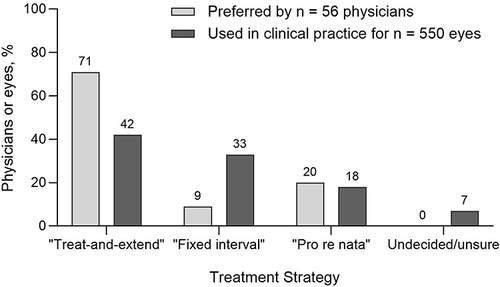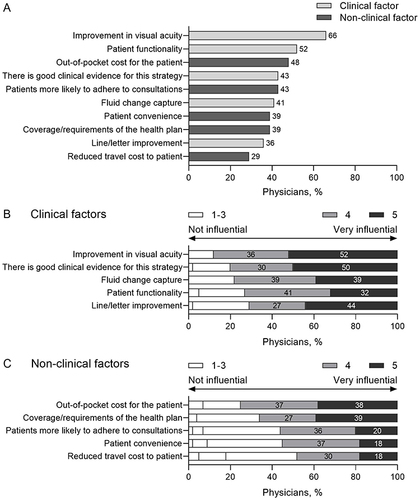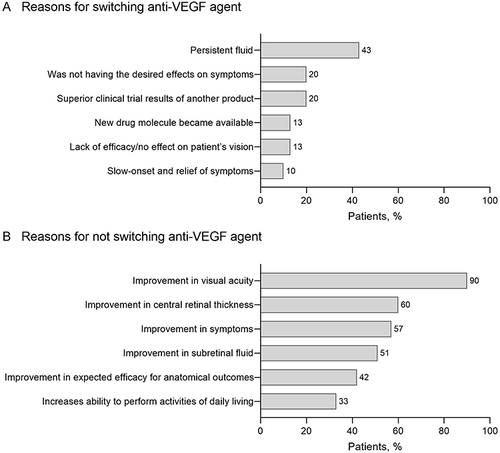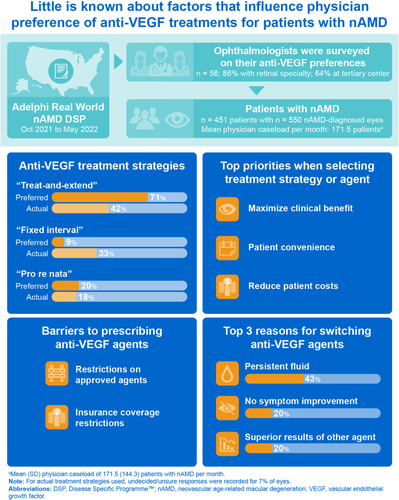Figures & data
Table 1 Physician Profile
Table 2 Patient Demographics, Clinical Characteristics, and Treatment Profiles
Figure 1 Anti-VEGF treatment strategies for nAMD. Physician-stated treatment strategy preference (n = 56 physician responses) versus physician-selected treatment strategy in clinical practice for nAMD-diagnosed eyes (n = 550 eyes).

Figure 2 Factors that drive physician-reported treatment decisions. (A) Top 10 most selected physician-reported factors that affect nAMD treatment decision-making (n = 56 physician responses). (B) Physicians rated how influential clinical factors, and (C) non-clinical factors were on their own treatment decision-making, using a 5-point Likert scale (n = 56 physician responses).

Figure 3 Physician-reported availability of approved anti-VEGF agents. Availability and restrictions on approved anti-VEGF agents (aflibercept, ranibizumab, and brolucizumab; n = 168 physician responses) compared with off-label bevacizumab (n = 56 physician responses). Physicians were able to choose multiple answers for types of restrictions.

Figure 4 Physician-reported reasons for switching/not switching anti-VEGF agent. (A) Most common reasons reported by physicians for switching away from an anti-VEGF agent (for n = 30 patients). (B) Most common reasons reported by physicians for not switching anti-VEGF agent (for n = 321 patients).


